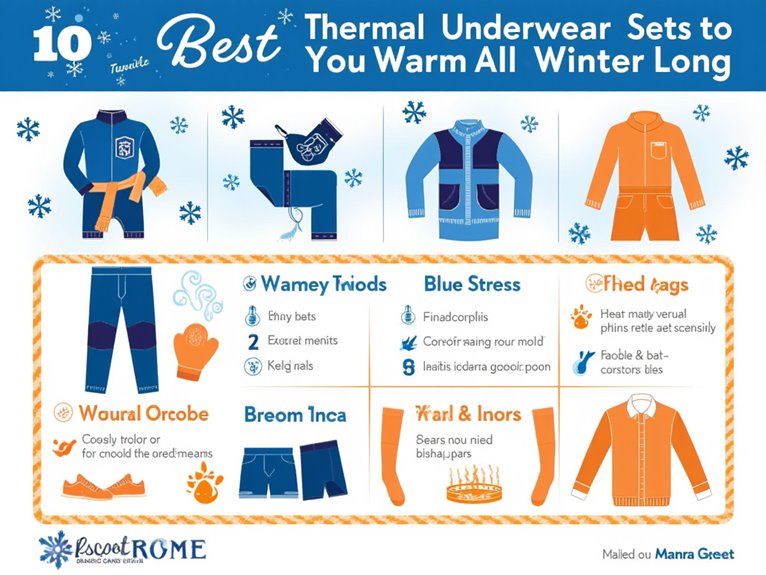What Is the Maximum Temperature for a Brick Oven?
The maximum temperature for a brick oven depends on the type of refractory materials used in its construction. The highest temperature tolerance typically ranges from 2300°F (1260°C) for ceramic blankets to 3200°F (1760°C) for high-temperature ceramic fibers. Effective temperature control is vital, as operating a brick oven at excessively high temperatures can lead to damage and compromise the oven's structural integrity. To fully understand the complexities of brick oven temperature management and achieve peak performance, it's essential to examine the intricacies of thermal mass, insulation, and refractory materials, as well as safe cooking temperature ranges and best practices for oven maintenance.
We are supported by our audience. When you purchase through links on our site, we may earn an affiliate commission, at no extra cost for you. Learn more. Last update on 14th December 2025 / Images from Amazon Product Advertising API.
Understanding Brick Oven Construction
A brick oven's thermal mass, comprising layers of refractory materials, insulation, and masonry, is carefully engineered to withstand extremely high temperatures while maintaining a stable internal environment.
This complex structure allows for ideal heat retention, efficient heat distribution, and a consistent cooking temperature.
The refractory materials, often including ceramic, brick, or stone, are designed to absorb and release heat slowly, ensuring a consistent cooking experience.
Insulation materials, such as ceramic blankets or refractory insulation, reduce heat loss and minimize temperature fluctuations.
The masonry components, including the oven's dome, walls, and floor, provide structural integrity and additional thermal mass.
This carefully crafted construction enables brick ovens to achieve and maintain extremely high temperatures, making them ideal for various cooking techniques.
Factors Affecting Temperature Tolerance
In terms of brick oven temperature tolerance, several factors come into play.
The thermal conductivity of the oven's materials and the quality of its insulation are two key aspects that greatly impact the oven's ability to withstand high temperatures.
Thermal Conductivity Matters
Thermal conductivity plays a crucial role in determining the maximum temperature a brick oven can withstand, as it directly affects the rate at which heat is transferred throughout the oven's structure.
Materials with high thermal conductivity, such as dense firebricks, can efficiently dissipate heat, allowing the oven to withstand higher temperatures.
On the other hand, materials with low thermal conductivity, like refractory ceramics, may struggle to dissipate heat, reducing the oven's temperature tolerance.
A well-designed brick oven should balance thermal conductivity with other factors, such as insulation and material selection, to achieve peak performance.
Insulation Quality Counts
Proper insulation installation can make or break a brick oven's temperature tolerance, as even the slightest gap or weakness in the insulation layer can compromise the oven's ability to retain heat.
A well-insulated oven can maintain high temperatures for extended periods, while a poorly insulated one will struggle to reach desired temperatures.
To guarantee proper insulation, consider the following key factors:
Insulation material: Choose materials with high thermal resistance, such as refractory ceramic blankets or calcium silicate boards.
Insulation thickness: Verify the insulation layer is thick enough to provide adequate thermal resistance.
Seamless joints: Confirm all joints and seams are properly sealed to prevent heat escape.
Insulation placement: Position insulation in areas where heat loss is most critical, such as the dome and walls.
Regular maintenance: Regularly inspect and maintain the insulation to prevent damage and degradation.
Thermal Mass and Heat Retention
Thermal mass and heat retention are critical components in achieving peak performance in a brick oven.
The ability of the oven's materials to absorb and retain heat is essential in maintaining a consistent temperature, and this is influenced by factors such as heat absorption rates, insulation, and refractory properties.
Heat Absorption Rates
Brick ovens, by virtue of their high thermal mass, are capable of absorbing and storing heat energy at a rate that allows for a consistent and sustained release of heat over an extended period.
This heat absorption rate is critical in achieving ideal cooking conditions.
The thermal mass of a brick oven enables it to:
Absorb heat energy quickly and efficiently
Store heat energy for an extended period
Release heat energy consistently and slowly
Maintain a consistent temperature throughout the oven
Reduce temperature fluctuations and hotspots
Insulation and Refractory
The strategic incorporation of insulation and refractory materials into the brick oven's design enables the thermal mass to function at its peak level, thereby maximizing heat retention and minimizing heat loss.
This combination allows for ideal heat absorption and storage, ensuring a consistent and efficient cooking environment.
The refractory materials, such as ceramic blankets or vermiculite, provide exceptional thermal resistance, while the insulation materials, like refractory mortar or calcium silicate, reduce heat escape.
Refractory Materials and Their Limits
Refractory materials, essential components of a brick oven's construction, have inherent limitations that dictate their maximum temperature tolerance. These materials, such as ceramic blankets, firebricks, and castable refractories, are designed to withstand extremely high temperatures. However, they are not indestructible and can degrade or fail if exposed to temperatures beyond their limits.
Some common refractory materials and their maximum temperature limits include:
- Ceramic blankets: 2300°F (1260°C)
- Firebricks: 2800°F (1538°C)
- Castable refractories: 3000°F (1649°C)
- High-temperature ceramic fibers: 3200°F (1760°C)
- Insulating firebrick: 2500°F (1371°C)
The Role of Insulation and Venting
When designing a brick oven, it is vital to weigh the interplay between insulation and venting to achieve ideal temperature control.
Effective insulation techniques guarantee that the oven's heat is retained, while strategic venting strategies facilitate the removal of excess heat and combustion byproducts.
Proper Insulation Techniques
Properly insulating a brick oven is essential, as it enables the oven to retain heat efficiently, thereby reducing heat loss and energy consumption. Effective insulation ensures that the oven reaches and maintains the desired temperature, resulting in better cooking performance and reduced fuel consumption.
To achieve optimal insulation, consider the following techniques:
- Use refractory insulation materials, such as ceramic blankets or vermiculite, to line the oven's dome and walls.
- Ensure a tight seal around the oven door and any vents to prevent heat escape.
- Insulate the oven's floor with a layer of refractory material or ceramic fiber.
- Use a dome-shaped insulation cap to cover the oven's top.
- Regularly inspect and maintain the insulation to prevent damage or degradation.
Effective Venting Strategies
In addition to retaining heat, a well-insulated brick oven also requires a thoughtful venting strategy to promote safe and efficient operation.
Proper venting guarantees the removal of combustion byproducts, reducing the risk of carbon monoxide buildup and maintaining a healthy cooking environment.
Effective venting strategies involve installing a chimney or vent pipe that extends at least 3 feet above the oven's roof, allowing for adequate airflow and draft.
Additionally, incorporating a flue damper or vent cap can help regulate airflow and prevent downdrafts.
A well-designed venting system not only boosts oven performance but also safeguards the safety of users and bystanders.
Temperature Ranges for Different Uses
Different temperature ranges are required for various uses of a brick oven, with precise control allowing for ideal results in applications such as baking, roasting, and cooking.
By understanding the ideal temperature ranges for specific uses, users can achieve perfect crusts, caramelized meats, and tender vegetables.
Temperature Ranges for Different Uses:
Baking: 450°F – 550°F (230°C – 290°C) for artisan breads, pizzas, and pastries
Roasting: 500°F – 600°F (260°C – 315°C) for meats, poultry, and root vegetables
Cooking: 400°F – 500°F (200°C – 260°C) for slow-cooked stews, braises, and casseroles
Drying: 150°F – 200°F (65°C – 90°C) for drying fruits, herbs, and meats
Curing: 100°F – 150°F (38°C – 65°C) for curing meats and fish
The Dangers of Overheating a Brick Oven
Operating a brick oven at excessively high temperatures can lead to a range of problems, including damage to the oven itself, compromised cooking results, and even safety hazards.
Overheating can cause the oven's materials to deteriorate, leading to cracks and structural weaknesses. Additionally, extremely high temperatures can alter the chemical composition of the oven's refractory materials, reducing their effectiveness.
Moreover, overheating can lead to uneven cooking, charred or burnt food, and even fires. This is crucial to monitor temperature levels carefully to avoid these issues and guarantee a safe and effective cooking experience.
Safe Temperature Ranges for Cooking
Understanding the ideal temperature ranges for different types of cooking is crucial to producing high-quality dishes.
Baking: 250°F – 375°F (120°C – 190°C)
Roasting: 300°F – 425°F (150°C – 220°C)
Grilling: 400°F – 550°F (200°C – 290°C)
Pizza cooking: 500°F – 600°F (260°C – 315°C)
Bread baking: 425°F – 475°F (220°C – 245°C)
To ensure optimal results, cooks should stay within these temperature boundaries.
Monitoring and Controlling Oven Temperature
Accurate temperature control is a critical component of successful brick oven cooking, and relies on effective monitoring systems to maintain precise temperatures.
To achieve this, brick oven owners can utilize various temperature monitoring tools, such as thermocouples, thermometers, and data loggers.
These tools provide accurate and reliable temperature readings, allowing cooks to adjust the oven's heat output accordingly.
Additionally, automated temperature control systems can be installed to regulate the oven's temperature, guaranteeing consistent and precise heat distribution.
Best Practices for Oven Maintenance
Regular cleaning and inspections are essential to maintaining the longevity and performance of a brick oven, as a neglected oven can lead to decreased heat retention, uneven cooking, and even safety hazards.
To guarantee top-notch performance, follow these best practices for oven maintenance:
Clean the oven floor and walls regularly to prevent food residue buildup.
Inspect the chimney and flue for blockages and damage.
Check the oven doors and seals for proper fit and function.
Perform routine inspections for cracks and damage to the oven's refractory materials.
Schedule annual professional maintenance to confirm the oven is in good working condition.





